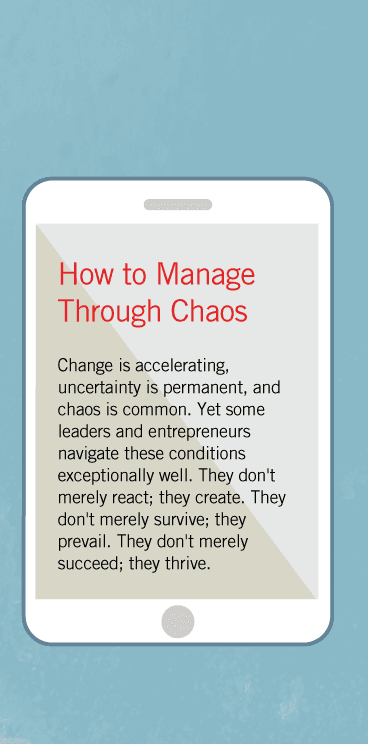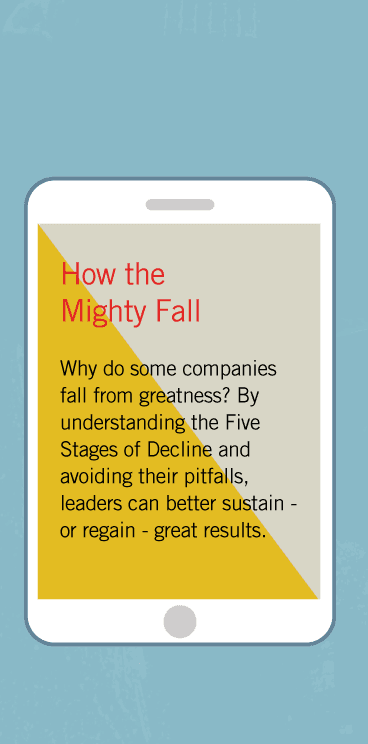7 Measures of Success
Associations are the hidden glue of our society and economy. Like the mortar that holds the bricks of a building in place, associations go largely unnoticed, yet they do much to hold the entire structure together. As such, associations cannot settle for being only good; they must work toward greatness. But what separates exceptional associations from good ones? What does it take to turn an association from good to great, and how can excellence be sustained?
In 2002, ASAE & The Center for Association Leadership assembled a team of association leaders into an ambitious multi-year effort to address exactly these questions. “If you’re serious about understanding what makes for great associations,” I urged, “someone in the association world should undertake a matched-pair study.”
One of my mentors, Jerry Porras, conceived of the historical matched-pair method at Stanford University in the late 1980s, when we were working as research colleagues puzzling over a vexing question. If you look over 100 years of history, most well run companies adopt most of the same basic practices, and yet few become great.It doesn’t matter whether you are looking at the principles of scientific management, statistical quality control, management by objectives, Six-Sigma, decentralization, reengineering, strategic planning; the best practices tend to spread across all major companies.
Yet some companies become truly great while others do not. The obvious question is: Why? If most companies eventually adopt largely the same practices, then what enduring principles do in fact distinguish those that become great from those that do not?
Research that examines only successful outcomes contains a fundamental flaw, what Porras called the “discover buildings trap.” If you study highly successful public corporations, you’ll see that they all occupy buildings, but you would equally see that 100% of mediocre performers also occupy buildings. The critical question is not what successful organizations share in common but what distinguishes great organizations from their less-successful counterparts?
In response to this dilemma, Porras had a significant research insight: Apply the idea of “twin studies” to social systems, not just in a snapshot, but over time. (In a genetic twin study, you examine the life trajectories of twins separated at birth to glean insight into nature versus nurture.) Most industries give us at least one pair of twins—two companies born in the same era, with the same market opportunities, facing the same demographics, technology shifts, and socioeconomic trends. But when you fast forward the tape of history, some companies become great while their twin brothers and sisters do not.
Consider General Electric (GE) and Westinghouse. Both companies came into existence near the start of the 20th century. Both had access to capital and faced a gigantic opportunity to disseminate electrical power. Yet, by the end of the 20th century, GE and Westinghouse had become very different companies. GE became an icon of excellence; Westinghouse, while a successful company, failed to attain the same stature. Porras’ idea was to study rigorously selected industrial twins (matched pairs) over a long enough period of time to separate short-term variables—such as luck, a single charismatic leader, or a great idea—from timeless principles that distinguish exceptional organizations from merely good ones. Porras’ methodological insight guided our six-year research effort that led to the book Built to Last, and inspired the method behind the five-year effort that led to Good to Great.

Shortly after we published Good to Great, I had dinner with Morten Hansen, a former member of the research team who had become a professor at Harvard. He stumped me with a question: “What is the most significant idea to come from the research so far?”
I thought about it for a minute and then offered two possibilities: Level 5 Leadership—leaders who display a paradoxical blend of personal humility and professional will—and Preserve the Core / Stimulate Progress—the discipline to hold core values and mission constant while endlessly adapting operating practices and strategies to a changing world.
“No, I don’t think so,” pushed Hansen. “Try again.” I mentioned a couple of other concepts from our work, and he again said, “No, I don’t think so.”
“What do you think?” I finally asked.
“The research method itself,” he said. “It could be applied to any sector of society, and to almost any social question.”
Inspired by Hansen’s observation, we began to challenge leaders throughout the social sectors that they could—indeed, should—do matched-pair analyses, to answer their own questions: what systematically separates great schools, hospitals, universities, police departments, associations, orchestras, or any other set of entities from merely good ones?
But we encountered a problem. This type of research requires at least 3X greater effort than studying highly-successful organizations by themselves. Many social sector leaders expressed interest, but most backed away when they realized that this research requires not months but years of effort.
Not so for ASAE & The Center for Association Leadership which, to my knowledge, became the first group to take on the challenge of applying our research method to a social sector question. During a four year period 2002-2006, The ASAE team persisted with their project, an effort made all the more remarkable by the fact that most team members volunteered.
The team made four trips to my office in Boulder, Colorado, to discuss research progress. My own involvement in the study was limited to serving as an informal mentor, giving the research team pointers the way a faculty advisor might guide a particularly dedicated doctoral student working on her thesis. And, like a thesis advisor, the professor can take no credit for the work of the student. The team put in the thousands of hours and gave up time away from their work and families. The team selected the study set, gathered the data, sifted the evidence, and drew the conclusions. Credit for this work goes entirely to them.
The power of the Center’s research lies not just in what the team found but equally what it did not find. I’ve always enjoyed the Sherlock Holmes story The Adventure of Silver Blaze, wherein Holmes cracked the case with the “curious incident of the dog in the night-time.” But the dog did nothing in the night-time! Ah, that was the curious incident—the fact that the dog did not bark—which led Holmes to the conclusion that the criminal must have been someone who knew the dog well. In matched-pair analysis, the “dogs that do not bark” provide as much insight as positive discovery. Board size did not bark in this study. Democratic board selection did not bark. Outside professional management did not bark. The distinction between staff-driven versus member-driven did not bark; what matters is being obsessively data-driven, combined with the creativity and discipline to act on that data in ways that meet your members’ needs better than any other organization.
Disciplined people who engage in disciplined thought and who take disciplined action—this simple mantra captures much of what separates any great institution from the average. In this report, the ASAE and the Center for Association Leadership research team shines a light on the disciplines peculiar to associations. But even more important, the team issues a challenge. For implicit within the matched-pair method we find a central truth: some organizations perform better than others, despite facing comparable opportunities and circumstances.
Every association can deliver better results for its members. The research team has done the community of associations a tremendous service by undertaking this research. Now it is up to you to make your association better tomorrow than it is today, better the next day than tomorrow, every single day, forever.
Jim Collins
Boulder, Colorado
June 10, 2006






